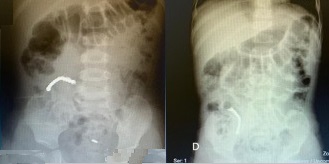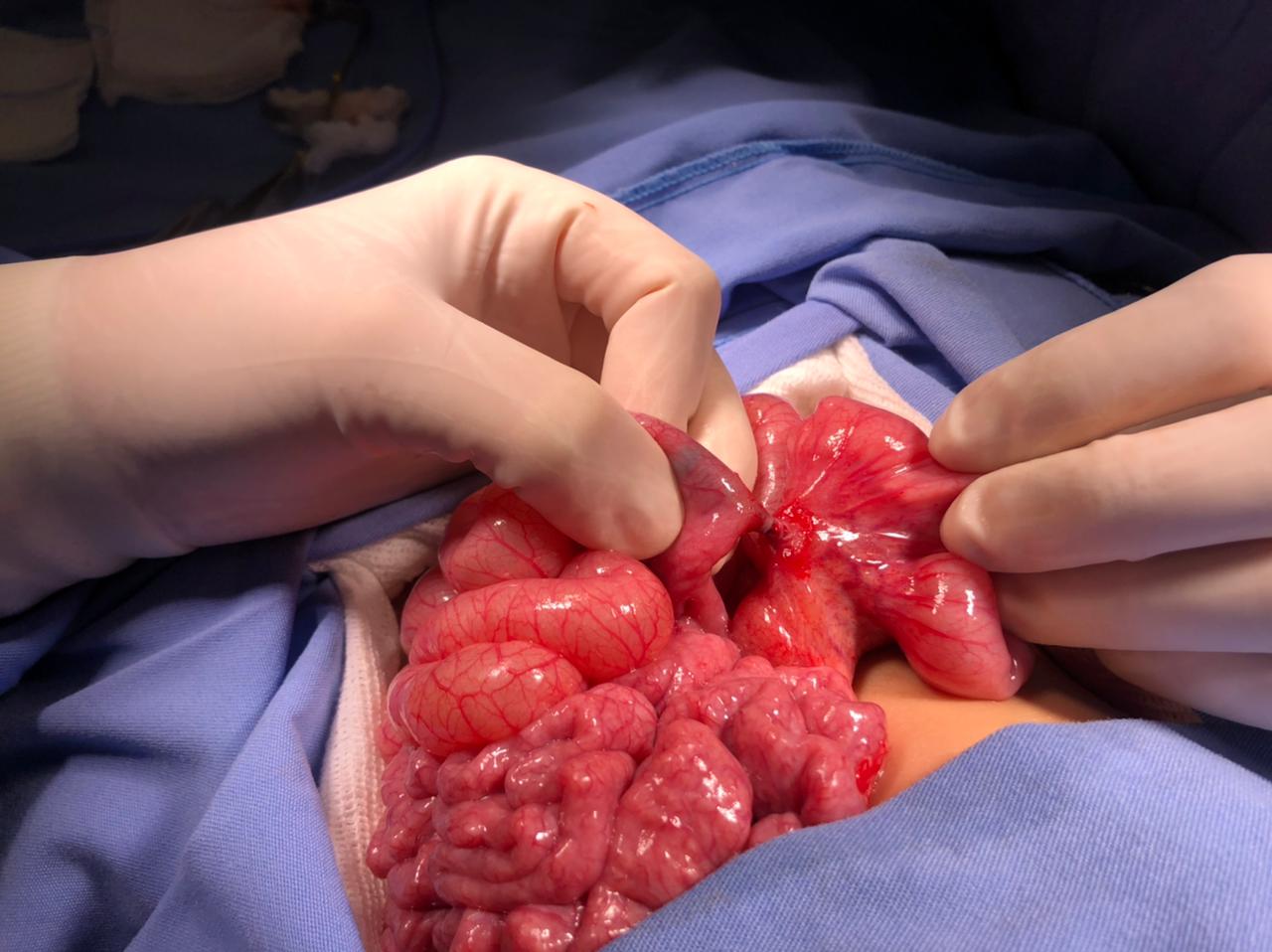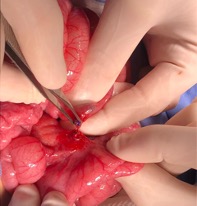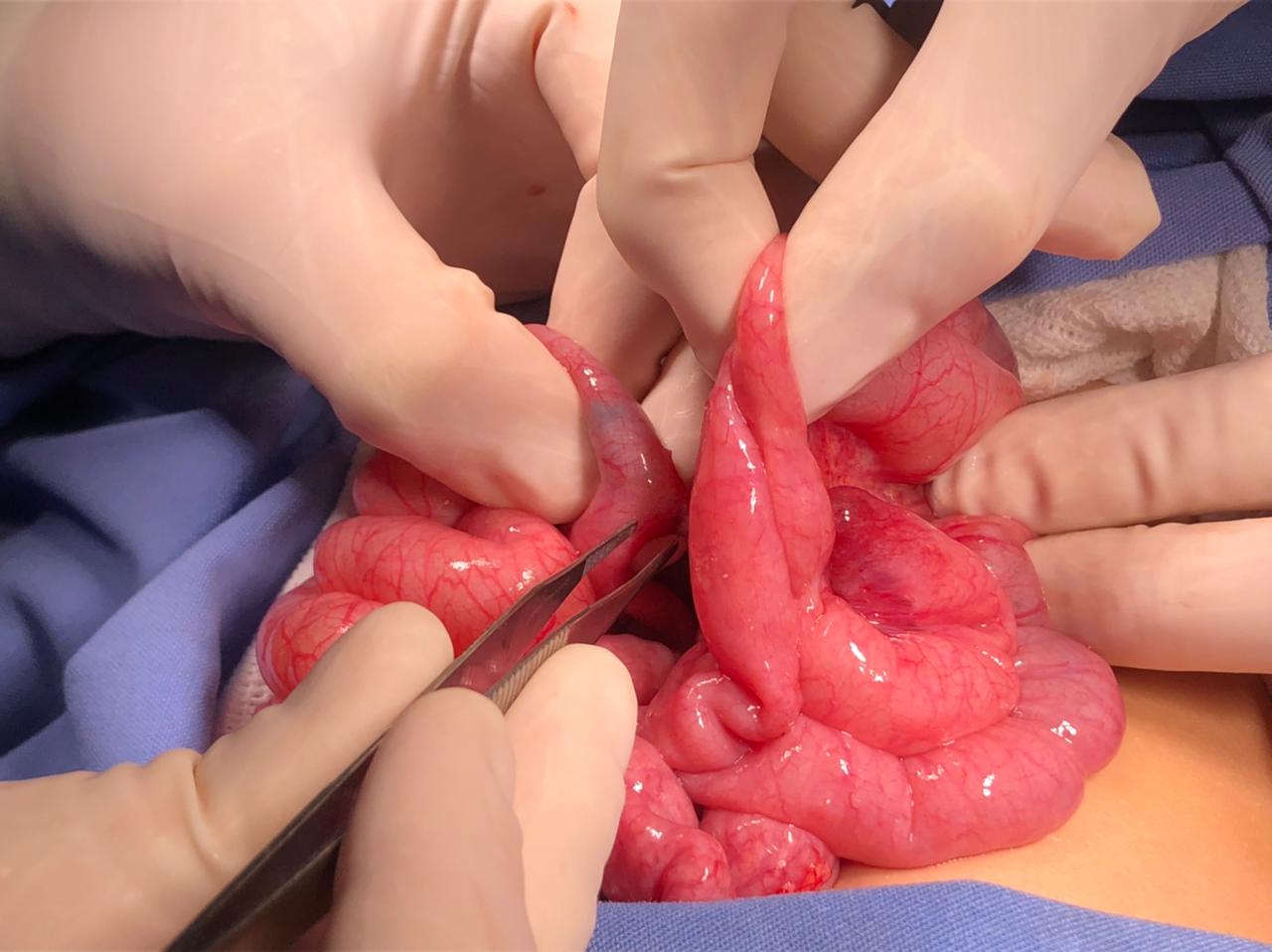International Surgery Case Reports
OPEN ACCESS | Volume 7 - Issue 1 - 2025
ISSN No: 2836-2845 | Journal DOI: 10.61148/2836-2845/ISCR
Loraine Entringer Falqueto 1, Andressa Luciani Pereira Rodrigues 2, Paula Rubio Vilar 3, Isabella 4, Cristina Boneto 5, Sylvio Gilberto Andrade Avilla 6, Leila Grisa
1Pediatric Surgery of “Hospital Pequeno Príncipe”, Parana-Brazil.
2Medicine Student of "University Pequeno Príncipe", Parana-Brazil.
3Pediatric Surgery of “Hospital Pequeno Príncipe”, Parana-Brazil.
4Pediatric Surgery of “Hospital Pequeno Príncipe”, Parana-Brazil.
5Pediatric Surgery of “Hospital Pequeno Príncipe”, Parana-Brazil.
6Pediatric Surgery of “Hospital Pequeno Príncipe”, Parana-Brazil.
*Correspondence Author: Leila Grisa, Rua Desembargador Motta, nº 1070, Água Verde, Curitiba, Paraná, Brasil.
Received date: December 08, 2021
Accepted date: December 17, 2021
published date: December 21, 2021
Citation: Falqueto LE, Rodrigues APR, Vilar PR, Ferreira ICB, Avilla SGA, Grisa L. Alert of Surgical Emergency in Pediatriscs: Ingestion of magnetic balls with severe intestinal complications. International Surgery Case Reports. 2021, 3 (3). DOI: http;//doi.org/11.2021/1.1043.
Copyright: © 2021 Leila Grisa. This is an open access article distributed under the Creative Commons Attribution License, which permits unrestricted use, distribution, and reproduction in any medium, provided the original work is properly cited
Introduction: Foreign body (FB) ingestion is common in children under 5 years old or with neurological delay. Magnetic objects ingested singly are usually eliminated spontaneously. However, ingestion of more than one FB can generate complex intestinal lesions due to attraction between magnets in different intestinal segments. Cases report: The first case is a 12-year-old male patient, asymptomatic after ingestion of magnetized FBs, but with the intraoperative finding of lesions in the terminal ileum. The second patient is a female, 1 year and 5 months old, who ingested magnetized FBs. Attempted removal by colonoscopy was unsuccessful. Then, removal of objects by video-assisted laparotomy identified lesions involving 4 intestinal loops. Conclusion: The use of colored neodymium spheres as toys represents a great risk for children, for it increases the risk of ingesting magnetized FBs. Thus, there is a greater possibility of developing complex intestinal lesions. Parents and caregivers should be alerted about risk, as well as reinforce care with children's exposure to avoidable accidents.
Introduction
A foreign body (FB) is defined as any object or substance that inadvertently enters the body or its cavities. It can be ingested, placed in nostrils, in-ear canal, or aspirated [1]. FB ingestion in children is a recurring complaint in emergency services. The population more affected are children under 5 years of age and those with delayed neuropsychomotor development [2]. Among FBs most described in the literature, coins and batteries are most commonly ingested, small toys, and less frequently magnetized objects are also reported [3,4]. Historically, most documented cases of FB ingestion show that it reaches the stomach and passes through the gastrointestinal tract spontaneously.4 Endoscopic treatment is the most commonly performed, while surgery rarely is needed [5].
A major concern arose with the popularization of toys made with powerful magnets. Ingestion, of these magnetic objects, increases all over the world as well as their complications, which include obstruction, fistula formation, ulcers, perforation, and intestinal volvulus [5]. Magnetized neodymium toys are considered to be 5 to 10 times stronger than other types of magnets, and can attract up to 6 layers in intestinal walls [6,7]. In this article, two clinical cases of pediatric patients that ingested neodymium FBs, popularly known as “Neocube” are reported. The objective of this article is to report surgical treatment at a tertiary referral hospital in southern Brazil and alert about risks of these avoidable accidents.
Cases Report
First Case
A 12-year-old male patient was admitted to the emergency room with the report of ingestion of neodymium magnets one year ago. Despite being asymptomatic, abdominal radiography and computed tomography scan (CT scan) showed a circular image composed of 12 magnet spheres involving the small bowel (Figure 1).

Figure 1: X-ray with radiopaque FB into the intestinal loop (case 1).
After discussion with family members and other experts in the field, surgical exploration was chosen. Laparoscopy identified the intestinal segment adhered to the terminal ileum (10 centimeters from the ileocecal valve). The affected intestine was externalized by enlarged umbilical access and careful dissection was performed removing 12 magnets. Perforations were debrided and sutured in 2 planes.
He was hospitalized for 3 days without the need for intensive care. He accepted the diet in the immediate postoperative period. He evolved with isolated vomiting on the first postoperative day. A prophylactic antibiotic was continued for 24 hours.
Second Case
A female patient, 1 year and 5 months old, was referred to the emergency room after asymptomatic ingestion of an unknown FB. An acute abdominal X-ray (Figure 2) showed an opaque FB. Despite guidance for return within 48 hours, she returned after nine days still asymptomatic and without FB elimination. In return, the patient's mother confirmed that the child had access to the neodymium spheres toy at home.

Figure 2: X-rays identifying the FB’s migration and grouping (case 2).
After evaluating the patient, removal of FB by colonoscopy was unsuccessful. During preparation for colonoscopy, the patient developed nausea, vomiting, prostration, and diffuse mild abdominal pain. Therefore, immediately after a colonoscopy, surgical exploration was indicated.
Initially, by laparoscopy, the point of intestinal obstruction was identified and FBs were found. Due to difficulty in separating the adhered intestine (Figure 3, Figure 4, Figure 5), conversion was done with an extension of umbilical access and externalization of the intestine involved.

Figure 3: Alined magnets compounding a fistula through the mesentery and intestinal lumen.

Figure 4: Alined magnets were strongly attracted to each other, forming a fistula through the mesentery.

Figure 5: Magnetic spheres crossing four intestinal loops (two lumens and two mesenteries).
There was a fistula made by 12 colored and spherical magnets between the lumen of the jejunum, two jejunal-ileal mesenteries, and lumen of terminal ileum (40 centimeters from the ileocecal valve). Magnets were removed without additional damage to the mesentery and without devascularization in affected segments. The perforated jejunum and ileum were treated with debridement of borders and simple enterorrhaphy in two planes without reducing the intestinal size.
The patient remained hospitalized for four days without the need for intensive care. She received antibiotics for 24 hours and accepted a liquid diet on the first postoperative day, with slower evolution due to vomiting on the second postoperative day.
Follow-up
Both patients were re-evaluated on outpatient return and telephone contact was maintained. Both remained asymptomatic, without intestinal symptoms or hernias, and had well-healed surgical wounds. Clinical follow-up time varied from five to six months respectively.
Discussion
The ingestion of FBs is frequent among children under the age of 5 years and patients with neuropsychomotor development delay [2]. The invention of small magnetic toys made accidental ingestion more frequent among children.8 This ingestion is associated with complex lesions in the small intestine as demonstrated in reported cases. It is important to emphasize that both cases occurred within one month and had been treated in a pleasant environment without contamination of the cavity.
In general, when ingestion involves only a single magnetic object, complications are unlikely to arise and spontaneous elimination will occur. However, two or more magnets represent risk once they move separately from each other at different segments, in the gastrointestinal tract there is magnetic attraction through intestinal walls. When this occurs, it can cause ischemia and necrosis in the “pinched” intestinal loop with consequent perforation with peritonitis, fistula formation, or intestinal obstruction or intestinal volvulus [3,7].
As soon as the diagnosis is made, the patient should be subjected to close observation. This is due to difficulty when radiologically differentiating between the involvement of one or multiple bowel loops, as visualization on X-ray can be subtle or even impossible to be determined [3]. Radiological follow-up is necessary to check the evolution of FB along the gastrointestinal tract. In this way, X-rays should be repeated after 48h to 72h to demonstrate object progression, presence of pneumoperitoneum, and/or signs of obstruction. If it is proven that there is no movement of the FB or if there are complication signs, surgical intervention is required [3].
The purpose of these reports is to create an alert. Accidents with magnetics FB are preventable and are associated with clinical complications that put a child's life at risk as well as may bring long-term complications resulting from avoidable surgeries [9]. Health entities and the medical community must engage in primary prevention campaigns of these accidents. Parents and caregivers should be instructed about risks that objects like this toy, "neocube", offers when children reach it [9].
Conclusion
Ingestion of magnetized objects has been associated with complex intestinal lesions that may require a surgical approach, for very frequently they are not eliminated when more than one unit be ingested. Children and vulnerable people must not have access to colored neodymium spheres to avoid serious complications such as those described in these cases reports.